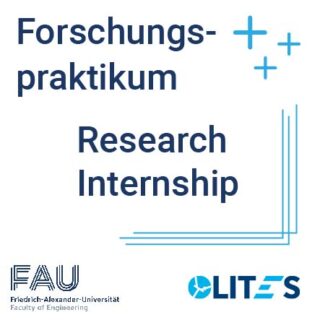BA, FP: Investigation of a CNN architecture for the detection of disturbed constellation diagrams
Description
In order to integrate AI algorithms, e.g. in the form of neural networks, into wireless communications systems, it is necessary to drastically reduce their resource consumption with regard to an embedded implementation. This begins with the selection of a suitable model architecture and often involves well-known optimization methods such as quantization and pruning.
Using the architecture of a convolutional neural network, a model based on a LeNet-5 architecture is to be adapted in such a way that minimal resource consumption (number of trainable parameters, memory consumption) is achieved with high performance (accuracy) at the same time.
The application should correspond to the detection of deliberate interference (jamming) in a wireless communication system. The approaches of the CNN architectures are to be trained and optimized on a given data set of received IQ data. As input for the respective CNNs, these IQ data were stored as 2D histograms (corresponding to the constellation diagram) and are already available for the work.
Research Questions
- Which architecture of a CNN results in low resource consumption and still achieves accurate classification results?
- How can the input layer of a CNN be adapted to reduce the model size?
- How many convolutional and pooling layers are required to classify the input images?
- What size does a Fully Connected Layer need at the output of the CNN?
- Which activation functions need to be used?
Research Goals
The aim is to develop a suitable AI framework for processing images of the constellation diagram of IQ data with suitable preprocessing of the available image data set. The performance of the CNN is to be optimized with regard to the number of trainable parameters, memory consumption and accuracy of the classification.
Tasks
The research questions can lead to the following sub-tasks:
- Literature research on the use and hardware implementation of neural networks ‘on the edge’ in communication systems.
- Familiarization with the data set and creation of the AI framework to guarantee reliable training of the CNN.
- Optimization of a model of a CNN for the detection and differentiation of various jamming scenarios.
- Optimization of the model size with regard to an implementation, e.g. in a µC or FPGA.
Optional:
- Extension of the data set with self-generated data.
- Implementation of a neural network on a suitable HW platform (µC or FPGA).
You are also welcome to discuss and contribute your own interests.
Skills
- Fundamentals of information and communication technology
- Fundamentals of deep learning and neural networks
- Experience with AI/Machine Learning and working with tools such as Keras or TensorFlow
- Confident handling of Python
References
- Saeif Alhazbi, Savio Sciancalepore, Gabriele Oligeri, “A Dataset of physical-layer measurements in indoor wireless jamming scenarios”, Data in Brief, Volume 46, 2023, 108773, ISSN 2352-3409, doi: 10.1016/j.dib.2022.108773
- Xubin Wang, Weijia Jia, “Optimizing Edge AI: A Comprehensive Survey on Data, Model, and System Strategies”, url: https://arxiv.org/abs/2501.03265

